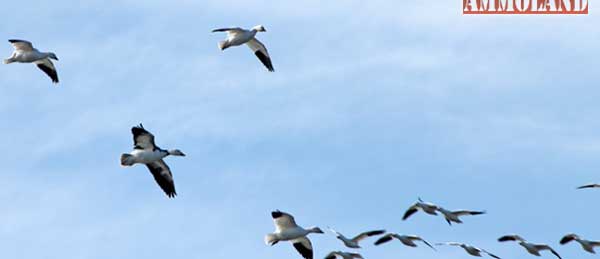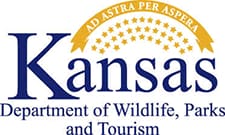

Pratt, KS -(AmmoLand.com)- Kansas Department of Wildlife, Parks and Tourism (KDWPT) staff at Cheyenne Bottoms Wildlife Area in Barton County, and U.S. Fish and Wildlife Service (USFWS) staff at Quivira National Wildlife Refuge just 30 miles to the south are closely monitoring waterfowl populations at the wetlands after dead geese were observed.
Staff at both areas picked up dead birds last week and sent samples for testing. Lab results confirmed that avian cholera, a contagious disease resulting from infection by the bacterium Pasteurella multocida, was the cause of death. This strain of bacteria commonly affects geese, coots, gulls and crows. Most of the dead birds found have been snow geese.
“We picked up about 30 dead geese on Monday, December 14,” said Cheyenne Bottoms Wildlife Area manager Karl Grover. “Those birds had died between last Friday and Monday, so we’re seeing about 10 dead birds a day. We estimate that the Bottoms is holding between 75,000 and 150,000 geese, half of which are snows, and about 10,000 ducks.”
USFWS staff at Quivira NWR gave similar estimates. Refuge manager Mike Oldham said some geese moved off of the refuge after the weekend.
“We probably have about 80,000 geese and about half of them are snow geese,” Oldham said. “We’re picking up about 4-5 dead birds per day.”
While it’s not uncommon for a contagious disease to affect waterfowl when large numbers are concentrated, avian cholera deaths are not common in Kansas. According to the USGS National Wildlife Health Center, humans are not at high risk for infection with the bacteria strain causing avian cholera. However, it’s recommended that hunters and their dogs avoid contact with any sick or dead birds.
Avian cholera quickly overcomes infected birds, resulting in death in as little as 6-12 hours, although 24-48 hours is more common. Infected birds may exhibit signs such as convulsions, throwing head back between wings, swimming in circles, erratic flight and miscalculated landing attempts.
Avian cholera should not be confused with avian influenza, which is a highly pathogenic virus that infected millions of poultry flocks in the upper Midwest last summer.
About the Kansas Department of Wildlife, Parks and Tourism:
As a public steward of the Kansas natural resources, the mission of the Department of Wildlife, Parks and Tourism is to: Conserve and enhance Kansas natural heritage, its wildlife and its habitats–to assure future generations the benefits of the state’s diverse, living resources; Provide the public with opportunities for the use and appreciation of the natural resources of Kansas, consistent with the conservation of those resources; Inform the public of the status of the natural resources of Kansas to promote understanding and gain assistance in achieving this mission.
For more information on KDWPT, please visit www.kdwpt.state.ks.us.
